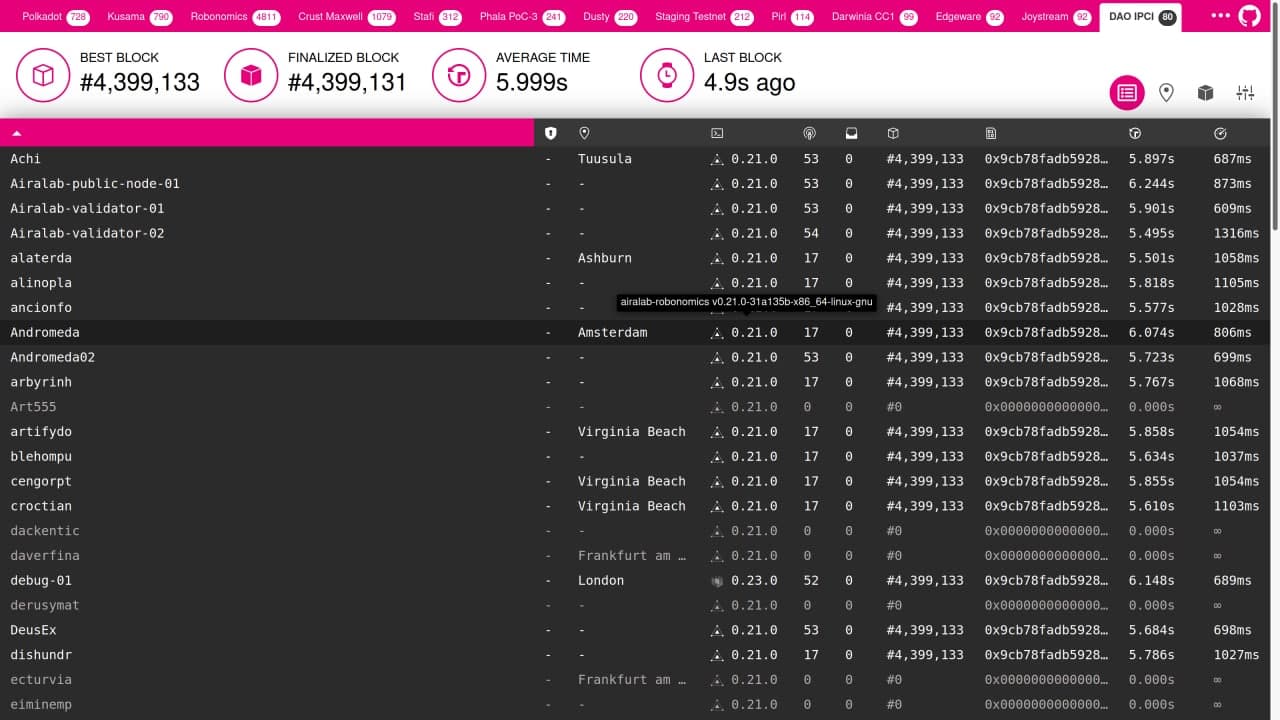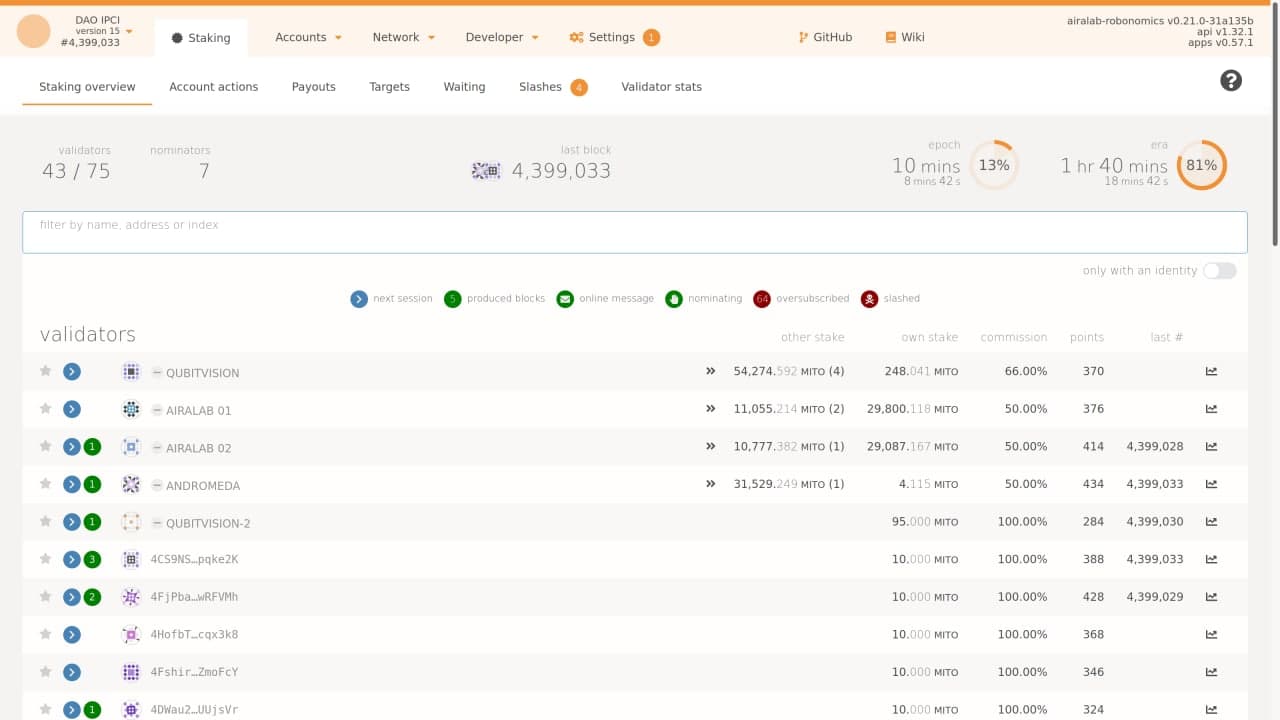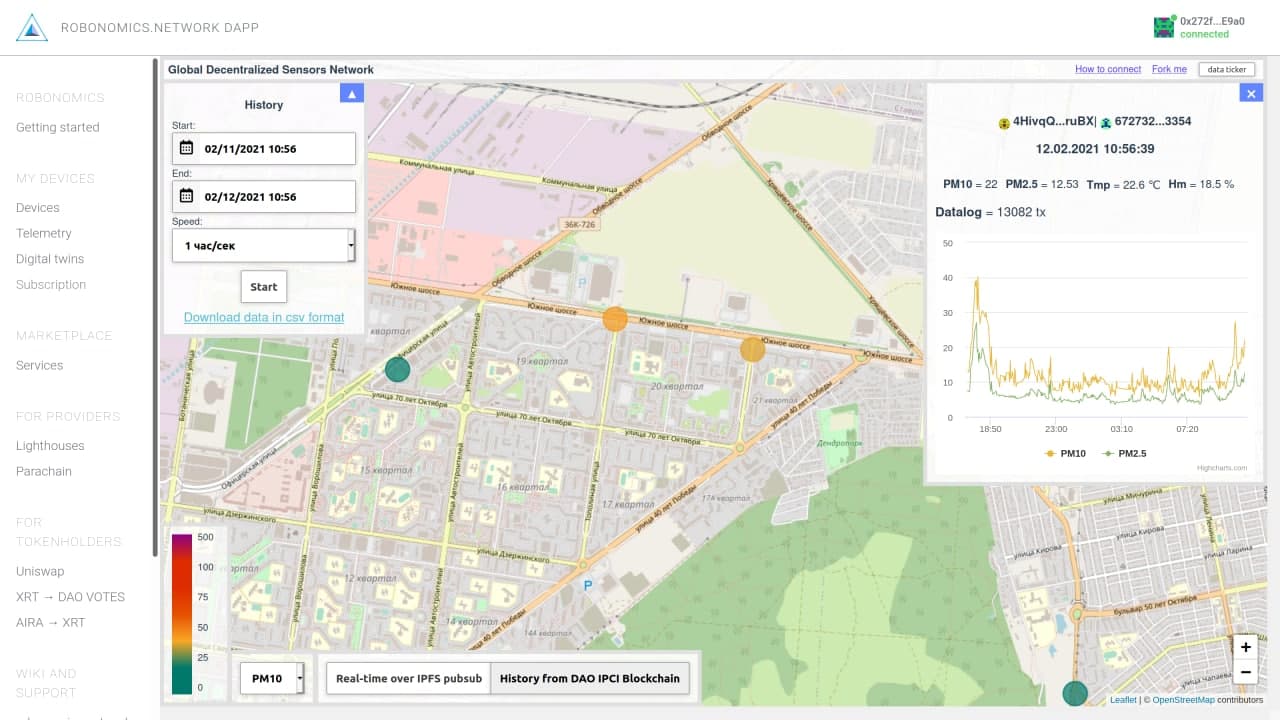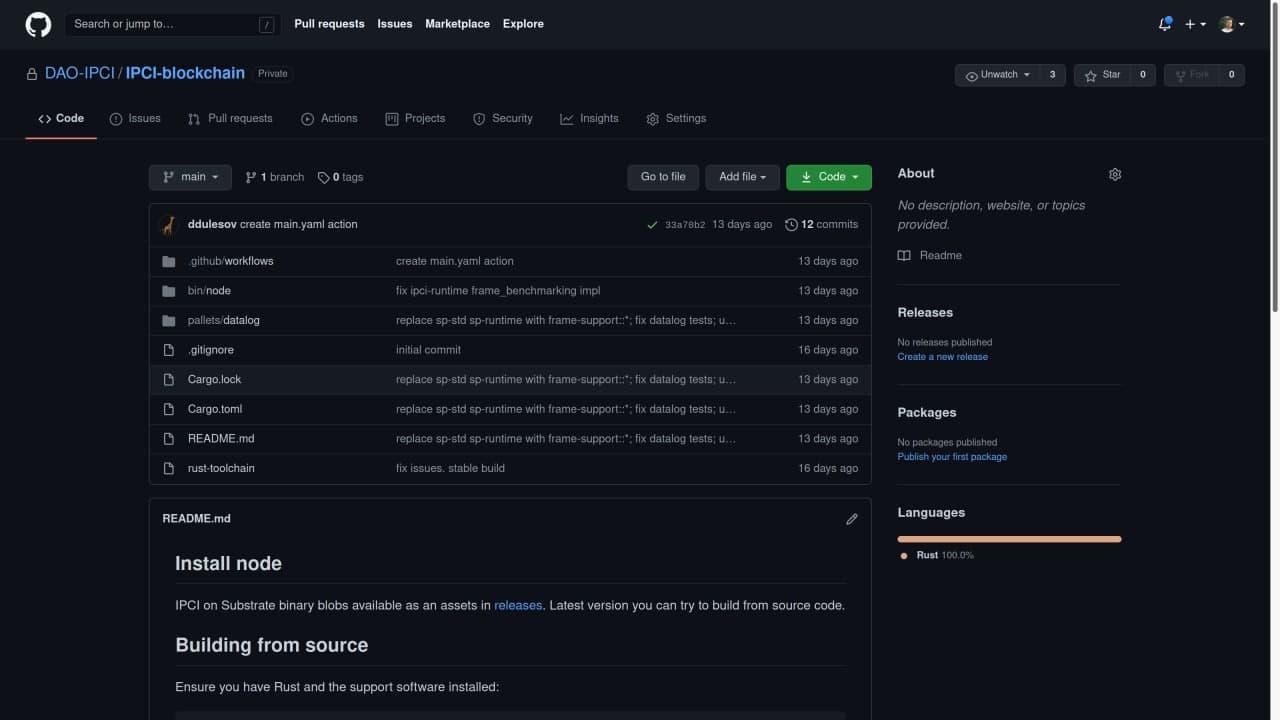02.12.2021
 In April 2021 DAO IPCI will turn one year old. The goals of the first year of the independent network set out at COP25 were: 1) to test issuance of a blockchain network with Polkadot technologies; 2) to form the first pool of individual network validators; 3) to connect IoT sensors to test MRV (monitor, reporting and verification) system and 4) to test the first mechanism of issuance of green finance instruments on Parity Substrate blockchain. We have completed all the goals and are now ready to move forward from the version 0.xx to 1.xx.
In April 2021 DAO IPCI will turn one year old. The goals of the first year of the independent network set out at COP25 were: 1) to test issuance of a blockchain network with Polkadot technologies; 2) to form the first pool of individual network validators; 3) to connect IoT sensors to test MRV (monitor, reporting and verification) system and 4) to test the first mechanism of issuance of green finance instruments on Parity Substrate blockchain. We have completed all the goals and are now ready to move forward from the version 0.xx to 1.xx.
Quick overview on the job done
Network decentralization
The blockchain has been working stable from the very start and has never been relaunched. Currently, there are more than 40 independent validators and around 70-80 full nodes in the network. The telemetry of the nodes in the DAO IPCI chain can be found via the link - DAO IPCI telemetry in Polkadot ecosystem.

Network validators
DAO IPCI chain has a similar mechanism of choosing validators as that of Polkadot. Any participant who has collected a sufficient stake in his support (NPOS) can become a validator. To learn more about the NPOS mechanism we recommend to read the article - Polkadot Wiki Nominated Proof of Stake (NPoS).
The complete list of DAO IPCI network validators can be seen in a separate portal (which is a fork of the Polkadot portal): https://ui.ipci.io

All the holders of MITO tokens can join the validator pool independently and with no limitation. Currently the validator pool is extended to 75 participants.
Testing of IoT infrastructure for MRV (monitoring, reporting and verification)
A small experimental network of sensors controlled by Robonomics developers is currently working in several Russian cities and regularly saving the data log in DAO IPCI blockchain. For example, up to date the sensors network in Togliatti has sent more than 13,000 transactions with the indicators on the air pollution.

The example of the usage of DAO IPCI Blockchain in the work of a nonprofit public sensors network for air pollution monitoring can be seen in Robonomics services: Decentralized Sensors Network

Now let’s come to the plans for 2021; or more precisely - Q2 2021 - Q2 2022
The main aim of DAO IPCI Blockchain in 2021 is to shift from testing the early version of the network to launching the first services and providing them access through the Polkadot ecosystem. Currently there are 6 main milestones:
Milestone 1: Separating the program code of DAO IPCI from the Robonomics repositories
The works are planned to be completed by Q1 2021.
During 2020 DAO IPCI network was using Robonomics releases. As in 2021 the difference in the program code of the individual chains build on substrate and projects planning to become parachains in Kusama increased substantially, it was decided to fork the chain in the DAO IPCI repository: https://github.com/DAO-IPCI/IPCI-blockchain

Milestone 2: Launch of the services for compensating carbon footprint and issuing digital passports of environmental produce.
The works are planned to be completed by Q2 2021.
The works will include:
- Transfer of previously issued carbon credits from the traditional registry to DAO IPCI Blockchain
- Preparing instructions for connecting smart home to electricity consumption-related carbon footprint offset service
- Providing interface in the form of dApp for offsetting carbon footprint of products and issuing digital passports.
Milestone 3: Enabling complete lifecycle for issuance and support of carbon credits
The works are planned to be completed by Q3 2021. The overall target is to showcase the benefits of Parity substrate and Polkadot for the global carbon market which jumped 20% last year to a record $277 billion.
The works will include:
- Issuing carbon credits from a forest climate project in South America in partnership with local standard, ecosystem and one of the global project developers.
- Providing interface for issuance, trading and using tokens linked to climate projects
- Providing interface for the companies engaged in project monitoring based on satellite and IoT data)
Milestone 4: Enabling end-to-end lifecycle for structuring and issuance of digital SDG-linked bonds
To enable the full lifecycle of sustainability linked bonds from structuring to issuance and reporting Evercity team has built Parity Substrate blockchain-based Smart Sustainable Bond protocol launched in DAO IPCI network. The project is supported by a grant from Web3 Foundation - a leading fund which nurtures and stewards technologies and applications in the fields of decentralized web software protocols.

Milestone 5: Development of blockchain infrastructure for climate action cryptostamps
Cryptostamps are non-fungible tokens (NFTs) developed by IAAI GloCha which record contributions to local and global climate action goals of citizens and youth. It is embedded in digital local communities and thematic communities and climate actions mechanisms (NAZCA Platform). Video - https://www.youtube.com/watch?v=b9ITBcGlQe4
Milestone 6: release of MITO token in Polkadot ecosystem
After the Polkadot chain is able to launch parathreads, the project developers will start integrating MITO token with the Acala parachain. This will allow us to get the first entry point for a wide spectrum of users. Once the MITO token enters the open Polkadot ecosystem, DAO IPCI network will shift from test mode to being completely functional and providing the first services for green finance market participants and users supporting voluntary emissions reduction projects.
Further vision of DAO IPCI development in the Polkadot ecosystem
One of the tasks of 2022-2023 is integration of the independent DAO IPCI chain into the Polkadot ecosystem. The most interesting option that we see is linking the Robonomics roadmap for launching Relay Chain under control of Polkadot with connecting DAO IPCI as a Robonomics parachain. In case of successful integration of DAO IPCI parachain into Robonomics Relay Chain on Polkadot, all the linked devices will be able to use a spectrum of services linked to environmental production agenda, logistics and usage of goods and services in the Smart Cities.